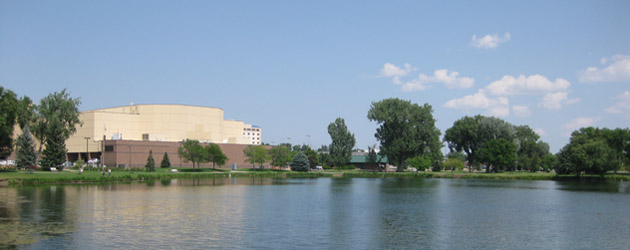Why Parks and Recreation are Essential Public Services
Parks and recreation have three values that make them essential services to communities:
- Economic value
- Health and Environmental benefits
- Social importance
Just as water, sewer, and public safety are considered essential public services, parks are vitally important to establishing and maintaining the quality of life in a community, ensuring the health of families and youth, and contributing to the economic and environmental well-being of a community and a region.
There are no communities that pride themselves on their quality of life, promote themselves as a desirable location for businesses to relocate, or maintain that they are environmental stewards of their natural resources, without such communities having a robust, active system of parks and recreation programs for public use and enjoyment.
Economic Value
- Parks improve the local tax base and increase property values. It is proven that private property values increase the value of privately owned land the closer such land is to parks. This increase in private property value due to the proximity to parks increases property tax revenues and improves local economies.
- A Texas A&M review of 25 studies investigating whether parks and open space contributed positively to the property values of surrounding properties found that 20 of the 25 studies found that property values were higher. “The real estate market consistently demonstrates that many people are willing to pay a larger amount for property located close to parks and open space areas than for a home that does not offer this amenity,”
- American Forests, a national conservation organization that promotes forestry, estimates that trees in cities save $400 billion in stormwater retention facility costs.
- Quality parks and recreation are cited as one of the top three reasons that business cite in relocation decisions in a number of studies.
- Parks and recreation programs produce a significant portion of operating costs from revenue generated from fees and charges
- Parks and recreation programs generate revenue directly from fees and charges, but more importantly, provide significant indirect revenues to local and regional economies from sports tournaments and special events such as arts, music, and holiday festivals. Economic activity from hospitality expenditures, tourism, fuel, recreational equipment sales, and many other private sector businesses is of true and sustained value to local and regional economies.
Health and Environmental Benefits
- Parks are the places that people go to get healthy and stay fit.
- Parks and recreation programs and services contribute to the health of children, youth, adults, and seniors.
- According to studies by the Centers for Disease Control and Prevention, creating, improving and promoting places to be physically active can improve individual and community health and result in a 25 percent increase of residents who exercise at least three times per week.
- A study by Penn State University showed significant correlations to reductions in stress, lowered blood pressure, and perceived physical health to the length of stay in visits to parks.
- Parks and protected public lands are proven to improve water quality, protect groundwater, prevent flooding, improve the quality of the air we breathe, provide vegetative buffers to development, produce habitat for wildlife, and provide a place for children and families to connect with nature and recreate outdoors together.
Social Importance
- Parks are a tangible reflection of the quality of life in a community. They provide identity for citizens and are a major factor in the perception of quality of life in a given community. Parks and recreation services are often cited as one of the most important factors in surveys of how livable communities are.
- Parks provide gathering places for families and social groups, as well as for individuals of all ages and economic status, regardless of their ability to pay for access.
- An ongoing study by the Trust for Public Land shows that over the past decade, voter approval rates for bond measures to acquire parks and conserve open space exceeds 75%. Clearly, the majority of the public views parks as an essential priority for government spending.
- Parks and recreation programs provide places for health and well-being that are accessible by persons of all ages and abilities, especially to those with disabilities.
- In a 2007 survey of Fairfax County, VA, residents of 8 of 10 households rated a quality park system either very important or extremely important to their quality of life.
- Research by the Project on Human Development in Chicago Neighborhoods indicates that community involvement in neighborhood parks is associated with lower levels of crime and vandalism
- Access to parks and recreation opportunities has been strongly linked to reductions in crime and to reduced juvenile delinquency.
- Parks have a value to communities that transcend the amount of dollars invested or the revenues gained from fees. Parks provide a sense of public pride and cohesion to every community. National Recreation and Park Association For more information on the value and benefits of parks go to www.nrpa.org
Please also refer to http://dirt.asla.org/2011/04/27/e-o-wilsons-love-letter-to-parks/ for a great article about parks and recreation.
Click on the images below to view.
-
 Click to open image!
Click to open image!
Click to open image!
Click to open image!
-
 Click to open image!
Click to open image!
Click to open image!
Click to open image!
-
 Click to open image!
Click to open image!
Click to open image!
Click to open image!
-
 Click to open image!
Click to open image!
Click to open image!
Click to open image!
-
 Click to open image!
Click to open image!
Click to open image!
Click to open image!
-
 Click to open image!
Click to open image!
Click to open image!
Click to open image!
https://www.wyssassociates.com/gallery/parksandrecreation.html#sigProIdc58819cbcb


